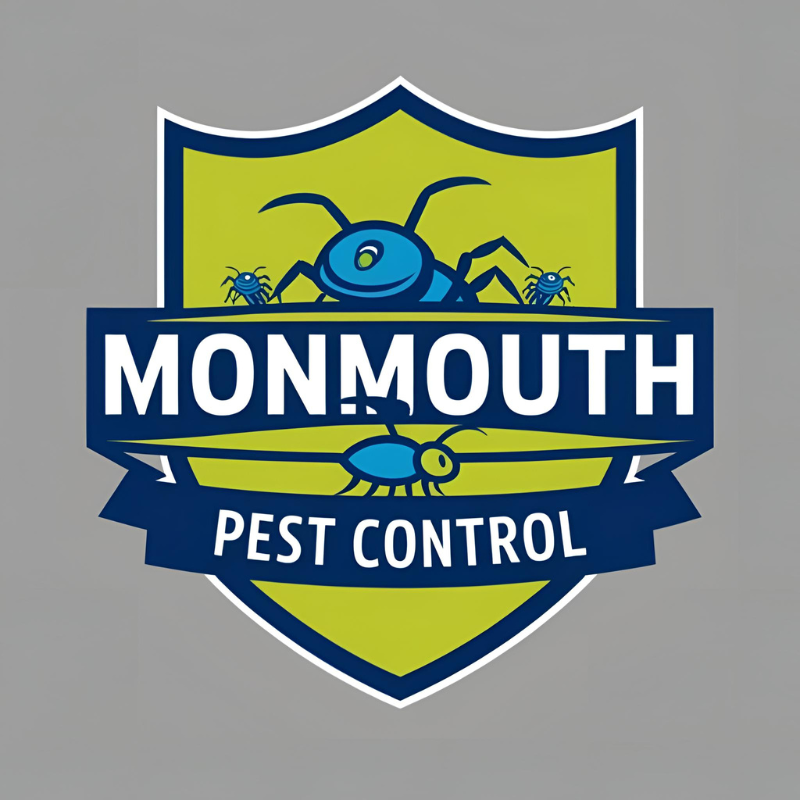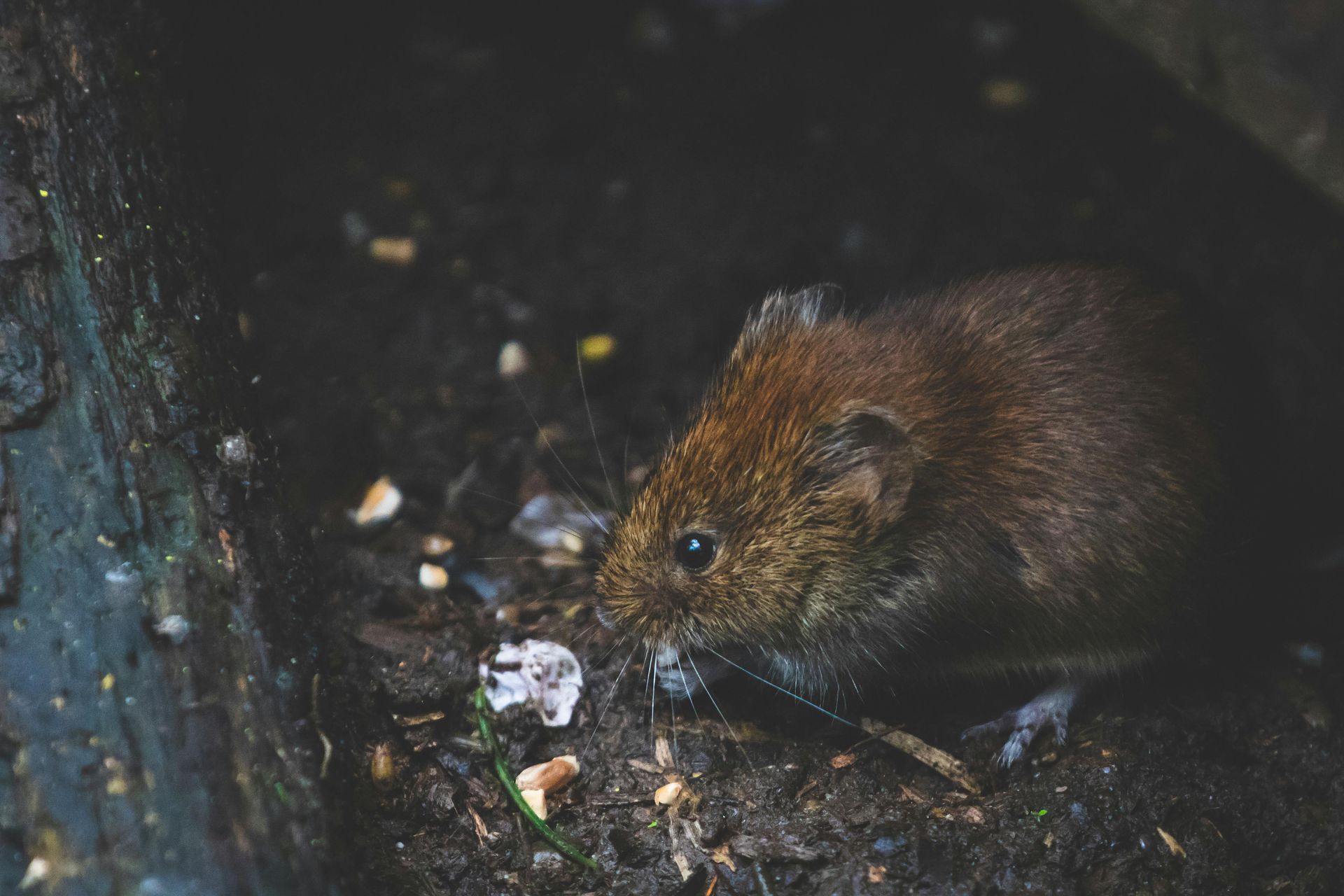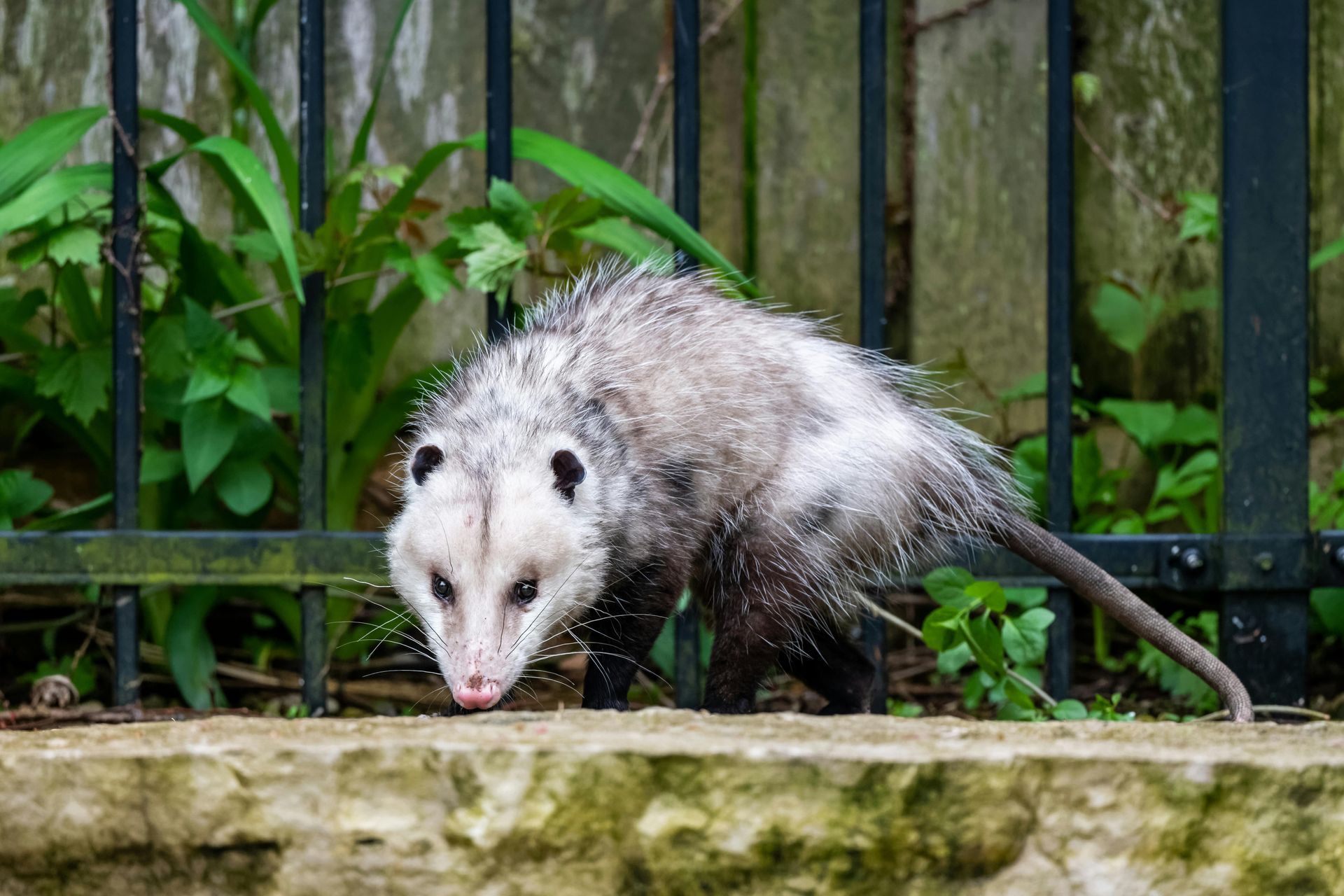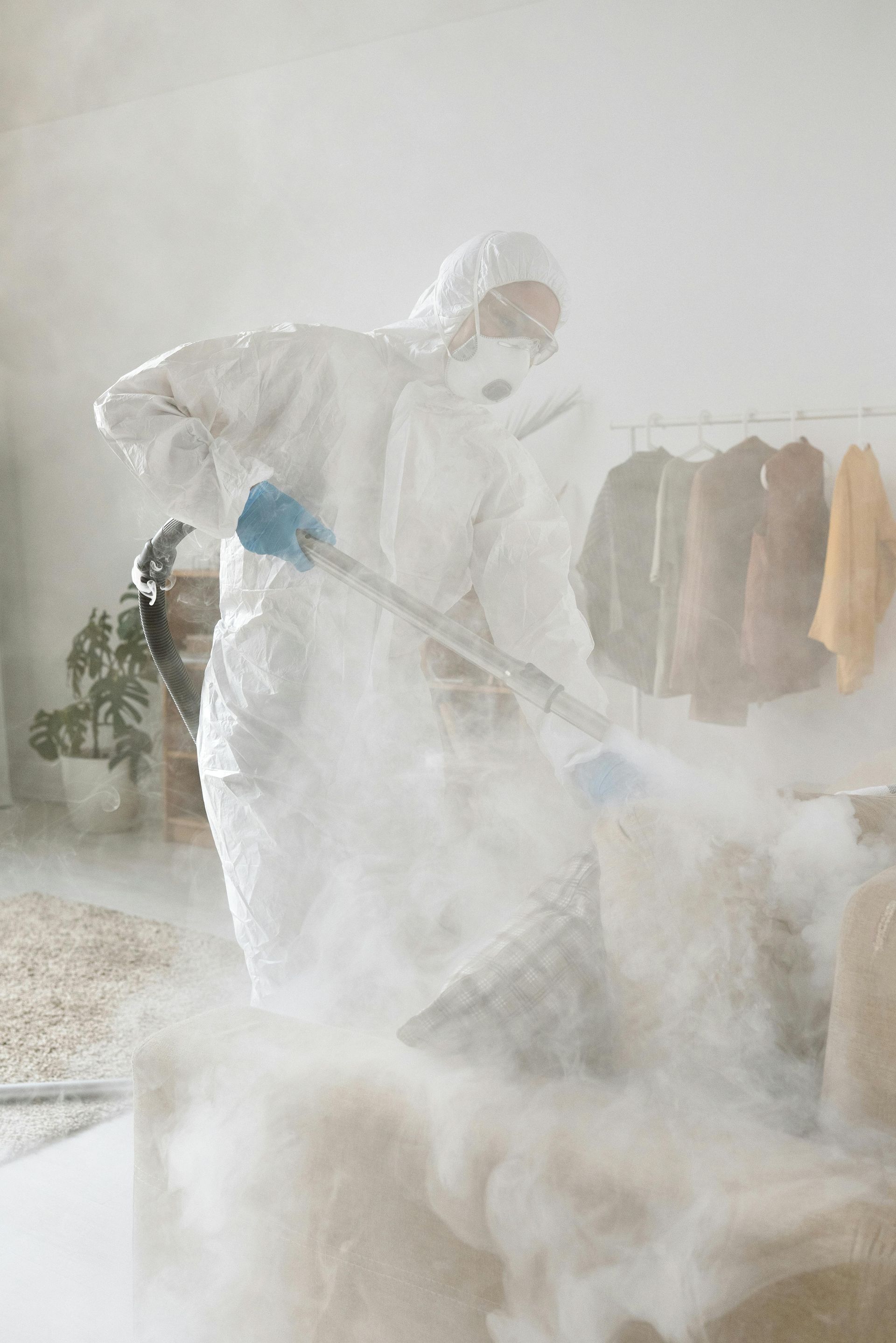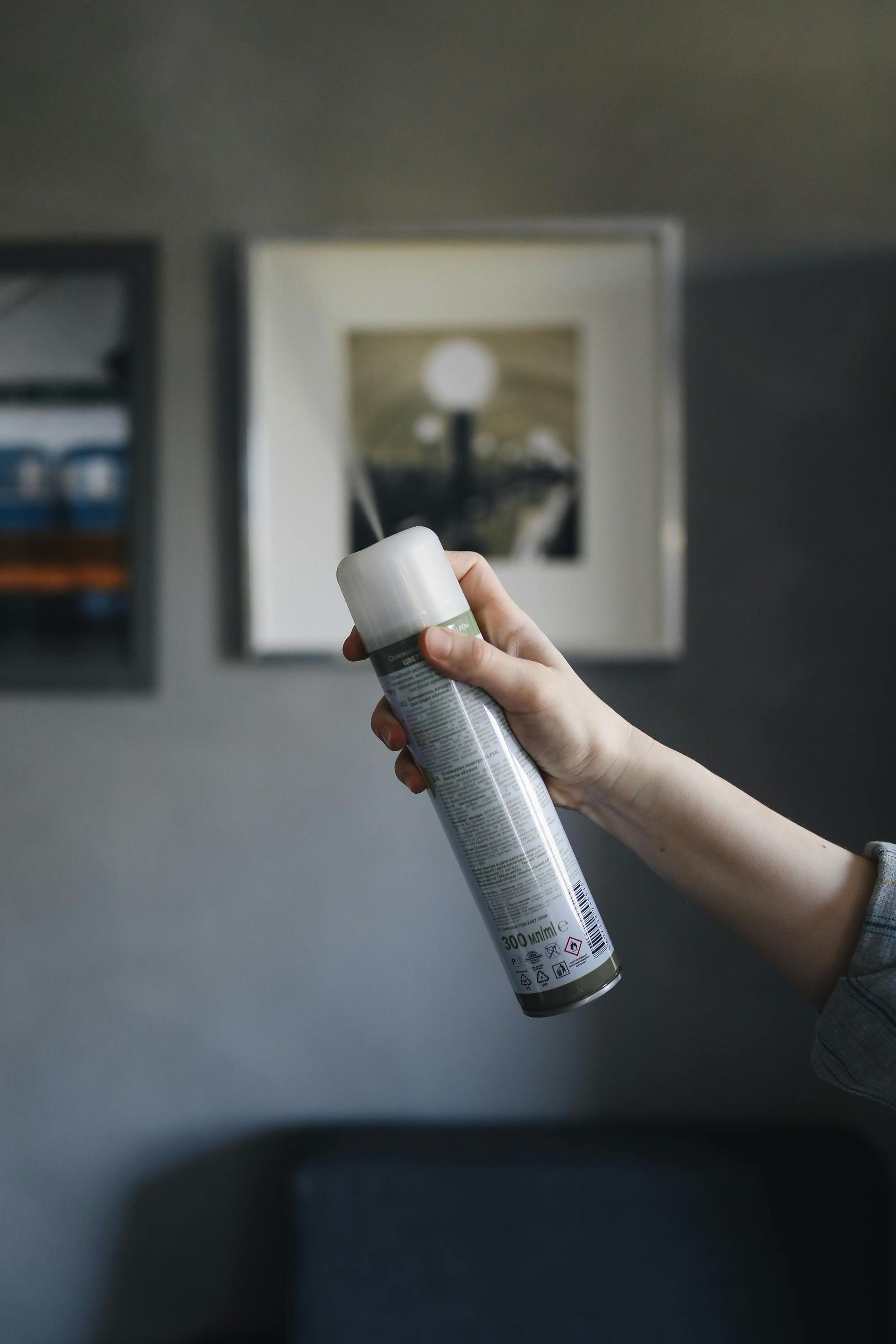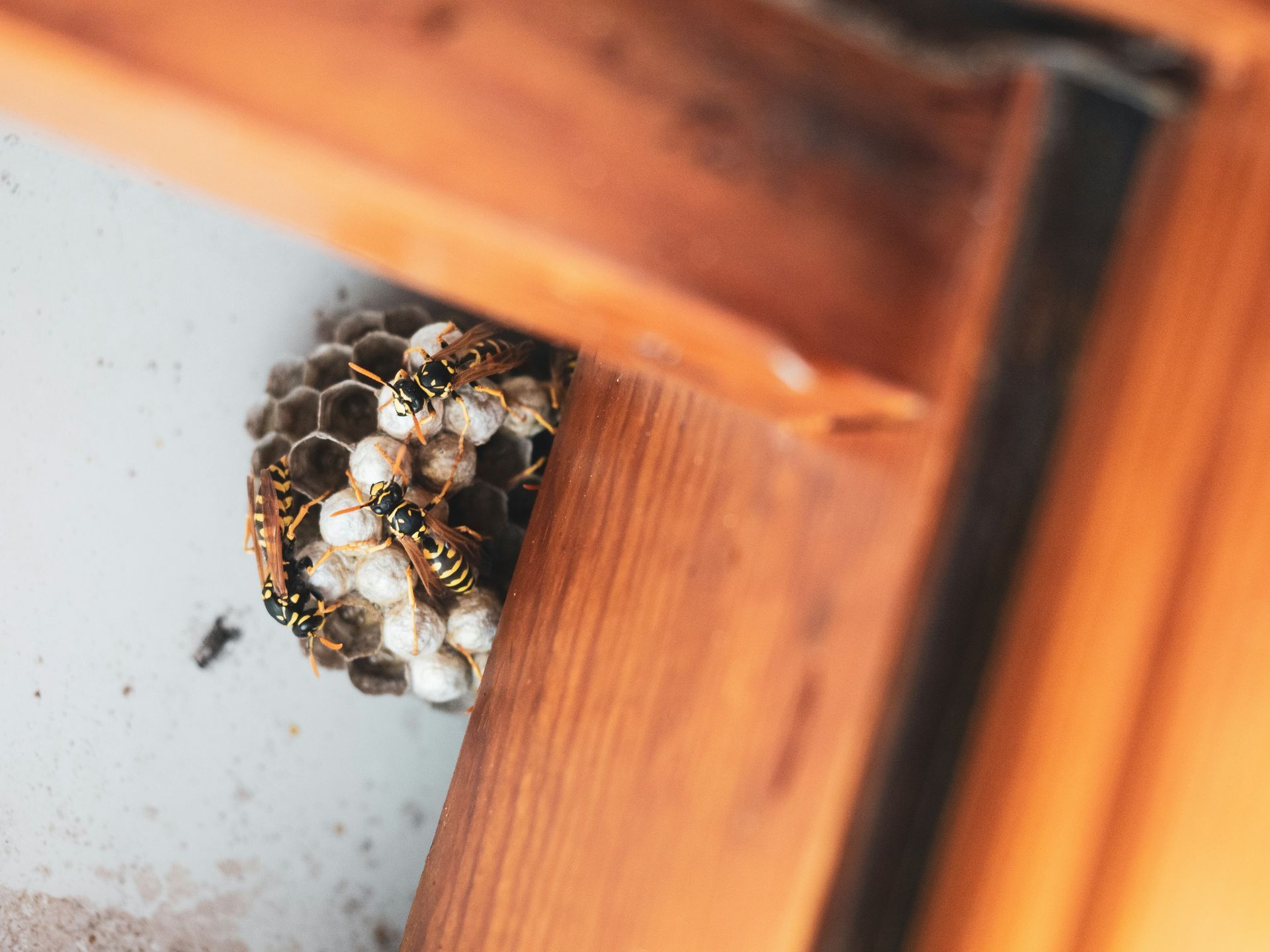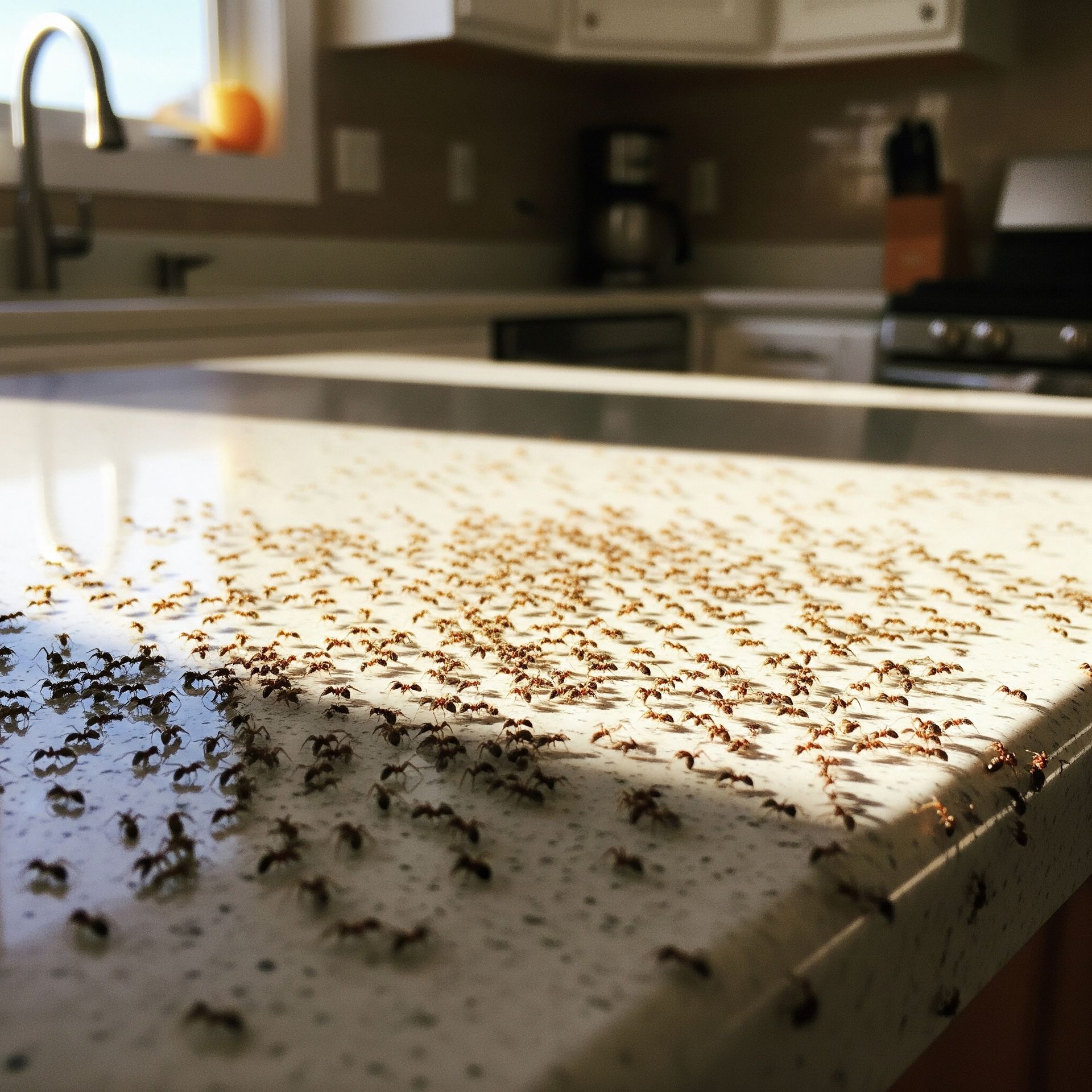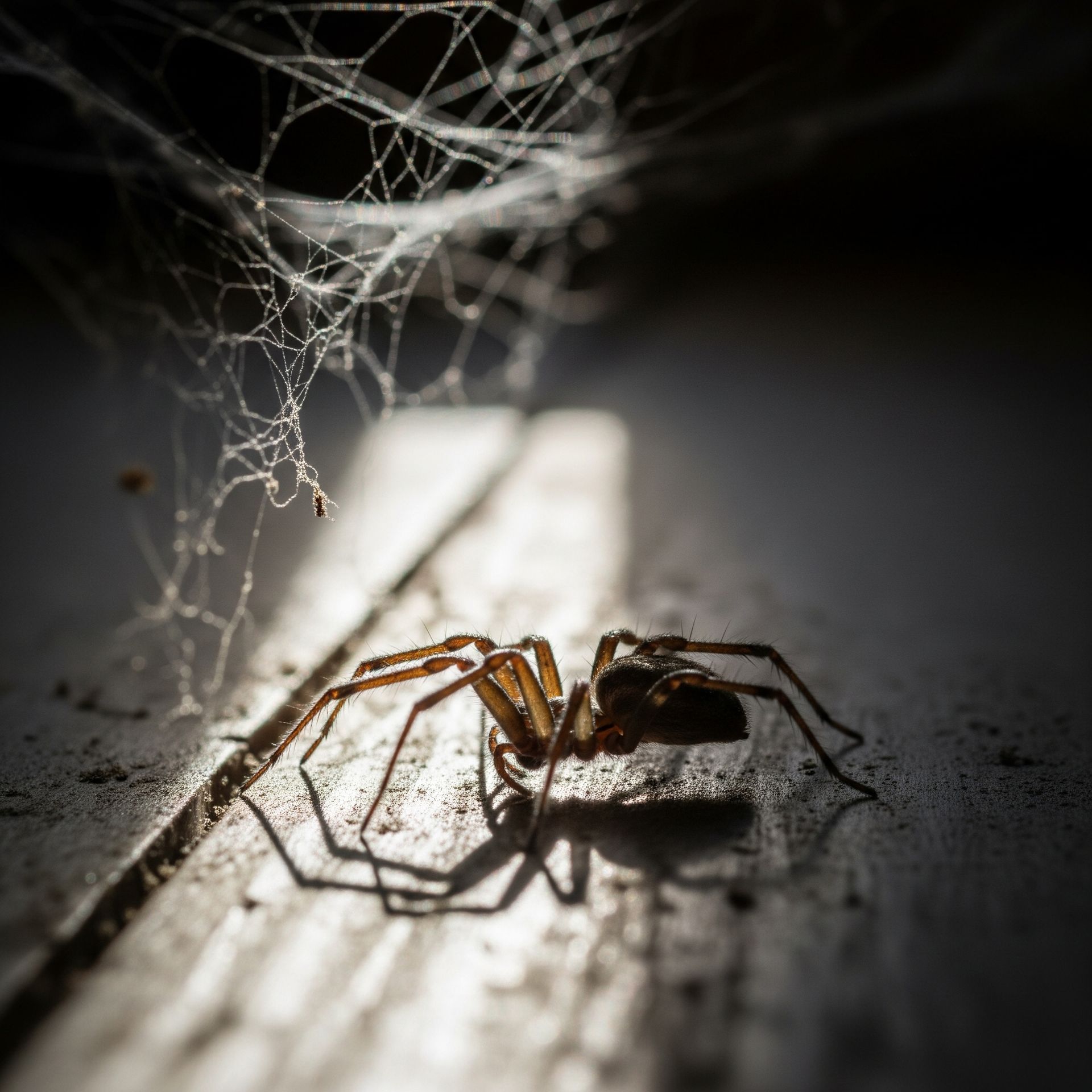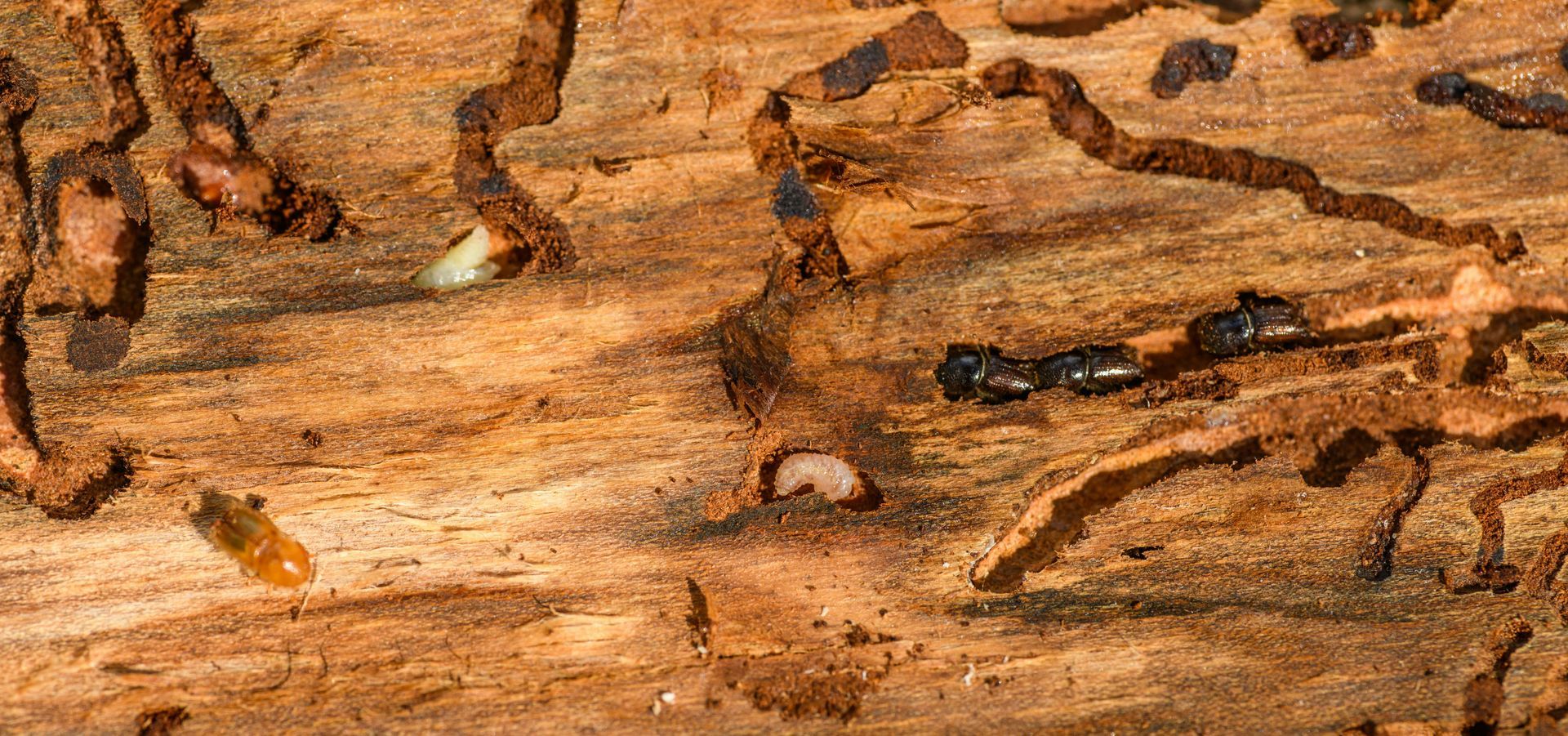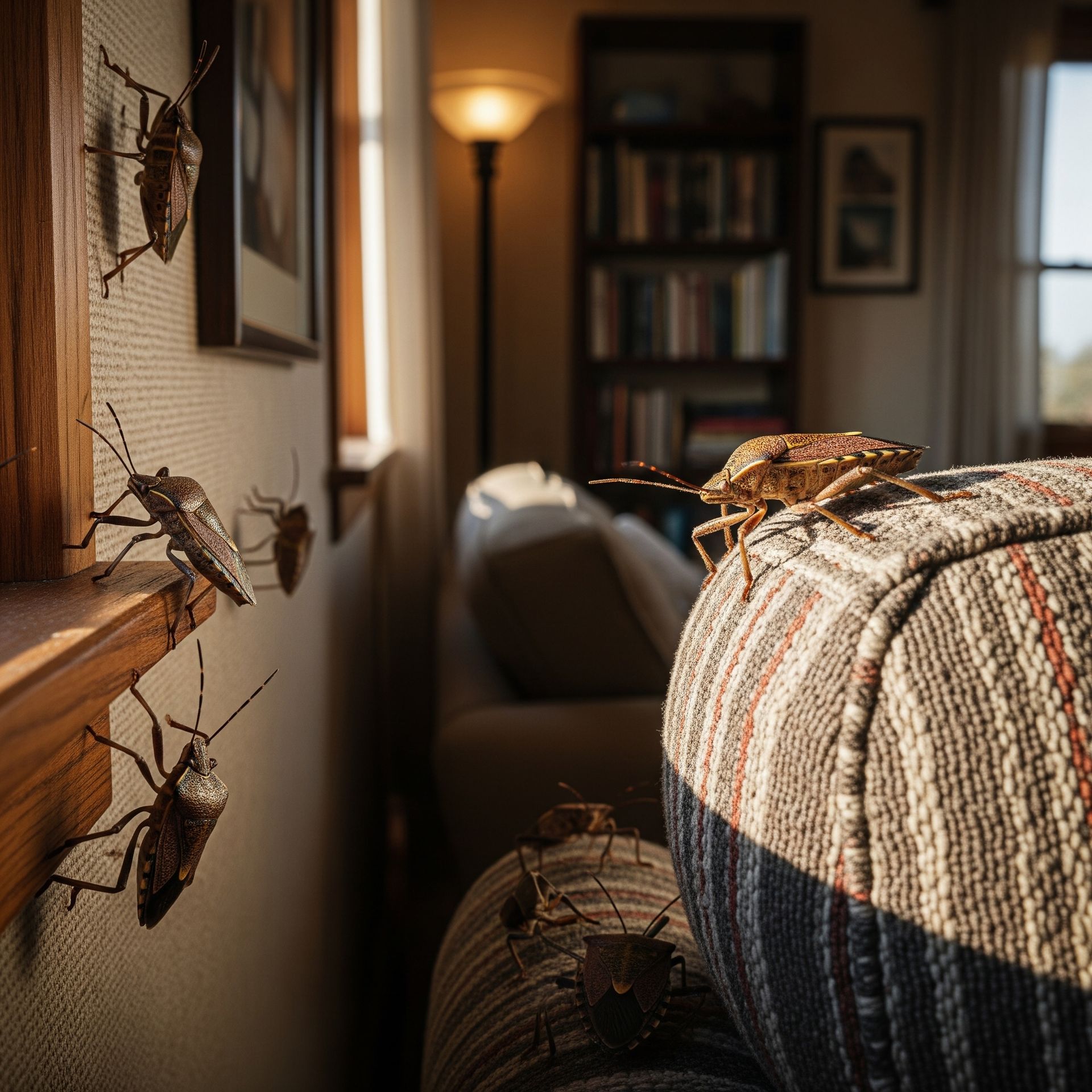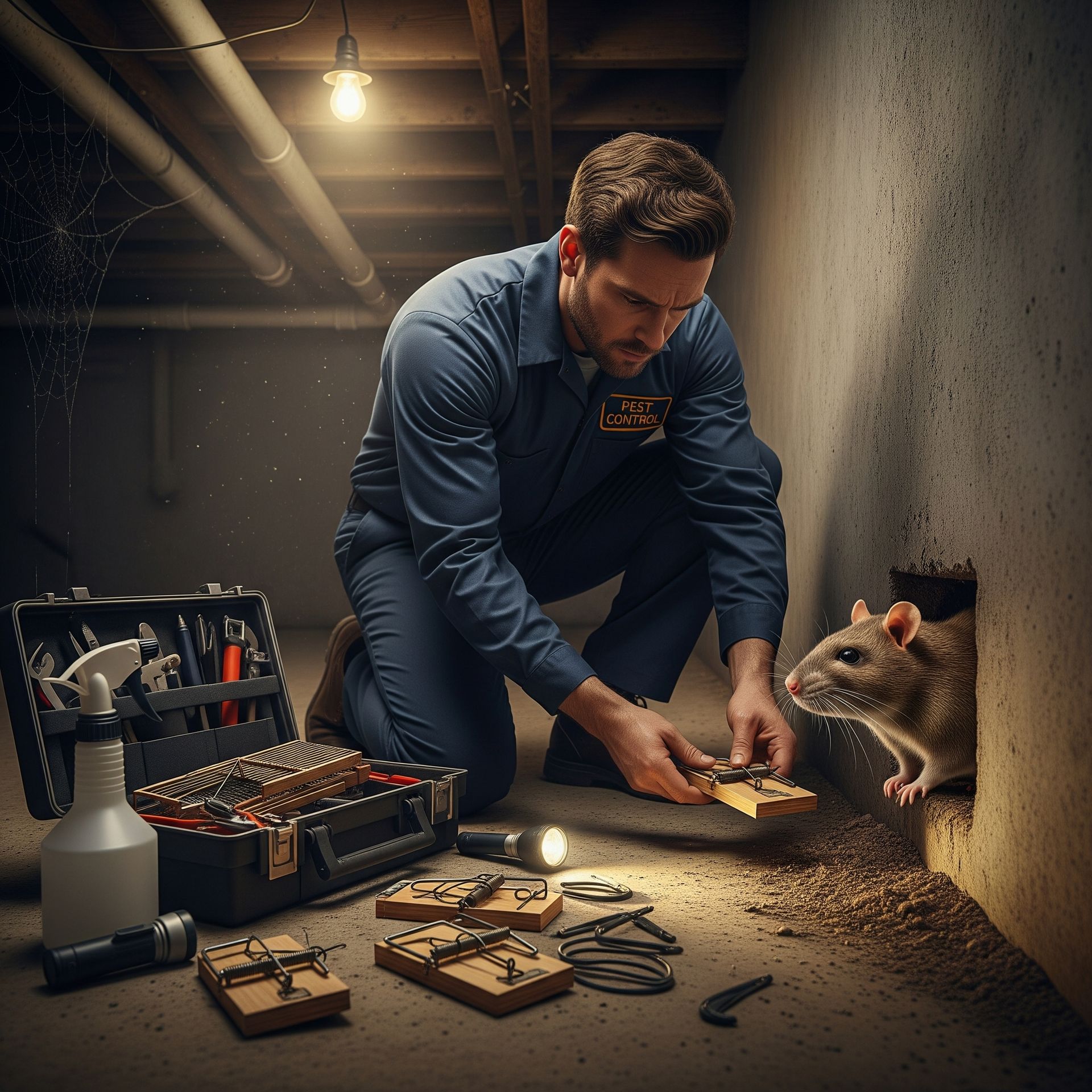Top 10 Signs You Might Have a Pest Infestation in Your NJ Home
If you’re hearing scratching or scurrying at odd hours, spotting tiny droppings or weird stains, or noticing chewed wires and furniture, it’s likely pests are crashing your NJ home uninvited. Look out for small holes in walls, funky musty smells, hollow-sounding wood, or nests made from shredded stuff. More flying bugs inside or greasy smudge trails on your walls are red flags, too. Keep an eye on these signs—you’ll want to know how our pest control works.
We proudly serve homes and businesses throughout the region, so if you’re in the area, check our service areas to see if we can help you reclaim your space from unwanted guests.
Key Takeaways
- Hearing scratching or scurrying noises in walls or attic, especially at night, signals possible rodent or squirrel infestation.
- Finding droppings, urine stains, or bite marks on furniture indicates active pest presence and potential damage.
- Noticing small holes, tunnels, or wood crumbling along baseboards and beams suggests termite or wood-damaging pest activity.
- Detecting musty, oily, or ammonia-like odors often points to hidden nests or rodent and cockroach infestations.
- Observing increased flying insects indoors or greasy smudges and dark trails near baseboards signals insect movement and infestation.
Unexplained Scratching or Scurrying Noises
If you’ve ever heard scratching or scurrying sounds when no one’s around, you might be dealing with a pest party in your walls or attic. Those scratching noises aren’t just random—they often mean critters like mice or squirrels have set up camp. You might feel a bit alone in handling this, but lots of folks face the same sneaky guests. When you catch those scurrying sounds late at night or early morning, it's a sign something’s moving where it shouldn’t be. Don’t ignore it, because these noises are like a secret code from your home telling you there’s uninvited company. Learn more about critter removal and how to protect your space.
Visible Droppings or Urine Stains
When you spot tiny droppings or weird urine stains around your home, it’s a pretty clear sign that some uninvited guests have been hanging out. These little messes aren’t just gross—they’re clues that pests like mice or cockroaches have made themselves at home. Getting good at dropping identification and urine detection can really help you figure out what critters you’re dealing with before things get out of hand.
Look out for:
- Small, dark droppings near food or in hidden corners
- Yellowish or dark urine stains, often sticky or smelly
- Fresh droppings that look moist versus old, dry ones
- Clusters of droppings indicating a nest or heavy traffic
- Urine stains around baseboards, cabinets, or pet areas
Noticing these signs early means you’re one step ahead, protecting your place and peace of mind. For example, our guide on mouse removal in Monmouth shows exactly how professionals handle these situations.
Gnawed or Chewed Wires and Furniture
If you spot bite marks on your furniture or notice chewed-up electrical wires, it’s a red flag that pests might be crashing your place. These critters love to gnaw on anything they can, which can lead to some serious damage and even safety hazards. Keep an eye out—your couch and your circuits both deserve some protection!
Visible Bite Marks
Though it might seem like a small thing, spotting bite marks on your furniture or chewing on your wires is a clear sign that some unwanted guests have taken up residence. These little nibbles aren’t just annoying—they’re a red flag. Getting familiar with bite mark identification can help you catch a pest problem early and save your home from serious damage. Plus, learning some pest bite prevention tricks keeps those critters from coming back.
Look out for:
- Tiny holes or rough edges on wood or upholstery
- Odd-looking teeth marks on cables and cords
- Small piles of wood dust or debris nearby
- Unexpected chewed corners on baseboards or doors
- Strange smells hinting pests might be lurking
Catch these signs early, and you’ll keep your home cozy and critter-free!
Damaged Electrical Wiring
Those tiny teeth marks on your furniture or wires aren’t just random snacks—pests love chewing on electrical wiring and wood, and that can lead to some serious trouble. When rodents or other critters gnaw on wires, they create electrical hazards that could spark fires or cause power outages. It’s not just about ugly damage; it’s about keeping your home safe. If you spot frayed wires or see chew marks near outlets, it’s a sign you need to act fast. Pest prevention isn’t just about keeping pests out—it’s about protecting your family and your home’s wiring system, too.
Furniture Surface Damage
Furniture that’s got little bite marks or gnawing spots isn’t just unlucky—it’s a clear sign pests have been making themselves way too comfortable. When you spot chewed edges or scratched surfaces, it’s time to step up your furniture protection game. These critters don’t just mess with your stuff; they’re also risking your home’s safety. You might notice:
- Nibbled chair legs or table corners
- Frayed or exposed wires behind sofas
- Claw or teeth marks on wooden surfaces
- Loose stuffing or fabric tears on couches
- Unexplained debris or tiny droppings nearby
Don’t wait! Tackling this early saves you money and hassle. After pest control, consider surface restoration to bring your favorite pieces back to life. Keeping your home cozy means protecting your furniture from these unwanted guests.
Small Holes or Tunnels in Walls and Baseboards
Spotted tiny holes or tunnels in your walls or baseboards? That’s a classic sign you might be dealing with some unwelcome guests. These aren’t just random marks but carefully crafted entrances or exits made by pests like termites or carpenter ants. Our post on the termite life cycle explains how these insects quietly cause damage over time.
Unpleasant Odors or Musty Smells
Ever walked into a room and caught a weird, musty smell that just won’t quit? That unpleasant odor might be more than just old carpet or forgotten leftovers—it could signal a pest problem lurking nearby. Pests like rodents, cockroaches, and even certain insects leave behind distinct smells from their droppings, nests, or bodies. These odors can sneak up on you and become a real nuisance, making your home feel less cozy.
Here are some common unpleasant sources and odor causes to watch for:
- A strong, oily scent from rodent urine
- A musky, damp smell indicating mold and pests
- Sharp, ammonia-like odor from cockroach droppings
- Rancid or decaying smells from hidden nests
- Foul stench near walls or baseboards
If you notice any of these smells, you’re not alone—and it’s a good idea to check for pests before things get worse!
Sightings of Live or Dead Insects and Rodents
When you start seeing live or dead bugs and rodents around your home, it’s usually a clear sign that pests have made themselves at home. Knowing whether you’re dealing with ants, cockroaches, or bed bugs can make a big difference. For kitchen invaders, check our guide on what attracts ants and how to prevent them from coming back.
Damaged or Hollow-Sounding Wood
If you tap on your wooden beams and hear a hollow sound, that’s a red flag you shouldn’t ignore. It usually means pests like termites or carpenter ants have munched away at the wood’s strength, and your home’s structure could be at risk. Catching this early can save you a lot of headaches—and maybe a few walls—from falling apart.
Wood Structural Integrity
A quick tap on your wooden beams or floorboards can tell you a lot about what's going on inside your walls. If the wood sounds hollow or feels soft, it might be suffering from wood rot or other structural damage caused by pests. Don’t ignore these signs—they could mean your home’s strength is at risk.
Here’s what to watch for:
- Wood that crumbles easily under pressure
- Discolored or damp patches on wood surfaces
- Sagging floors or uneven areas
- Small holes or tunnels that weaken beams
- A musty smell hinting at hidden moisture
Pest Damage Indicators
Though you mightn't see pests right away, your wood can give you plenty of clues that unwelcome guests have been dining on it. When you tap on a wooden beam or floorboard and it sounds hollow or feels softer than usual, that’s a big red flag. Termites and carpenter ants love to snack on wood, leaving it weak and damaged. You might even spot tiny holes or sawdust piles nearby—nature’s little breadcrumbs. Catching these signs early helps you take effective pest control steps before things get worse. Trust me, preventive measures are way easier than dealing with a full-blown infestation.
Nests Made From Shredded Materials
Those tiny piles of shredded paper, fabric, or insulation tucked away in hidden corners could be a sign that pests have set up shop. This is one of the many signs professionals look for when providing insect-specific pest control in NJ homes.
Here’s what to watch for:
- Shredded paper or cardboard bits bundled together
- Strips of fabric or insulation mixed with debris
- Small, hidden areas filled with soft, fibrous material
- Clumps that look out of place in attic or basement corners
- Signs of gnawing on furniture or stored items near nests
If you see these, it’s a good bet you’ve got pests making themselves comfortable. Catching these clues early helps you keep your home feeling safe and snug—just the way you like it.
Increased Number of Flying Insects Indoors
If you’ve noticed more flying insects buzzing around inside lately, it might be time to look into targeted control. For example, our tips on mosquito control in NJ show how to keep these pests from taking over your yard.
Grease Marks or Smudge Trails Along Walls and Floors
Greasy smudges or dark trails along walls and floors are clues that pests are on the move. Sometimes, these marks appear near entry points used by pests like stink bugs, which leave behind more than just a foul smell.
Identifying Grease Marks
Though grease marks might seem like just another smudge, they actually tell a story about unwelcome visitors sneaking around your home. When you spot these greasy trails, it’s a classic sign pests are on the move, leaving oily fingerprints or smudges behind. Knowing how to nail grease mark identification can give you a serious upper hand in pest prevention tips.
Here’s what to watch for:
- Dark, shiny streaks along walls or baseboards
- Smudges near food sources or entry points
- Marks that seem to appear overnight
- Trails that follow the same path repeatedly
- Areas where cleaning doesn’t fully erase the smudges
Spotting these early helps you join the pest-fighting team and keep your home cozy and critter-free.
Common Smudge Trail Locations
You’ll often find smudge trails popping up in some pretty predictable spots around your home, especially where pests love to hang out or sneak in. Spotting these greasy marks is key to smudge trail identification, and knowing pest movement patterns helps you catch trouble early.
Here’s a quick guide to common smudge trail locations:
| Location | Why It’s Popular | What to Look For |
|---|---|---|
| Baseboards | Easy wall access | Dark, greasy streaks |
| Door Frames | Frequent entry points | Smudges near hinges |
| Kitchen Cabinets | Food source nearby | Grease marks along edges |
| Around Pipes | Moisture attracts pests | Trails near plumbing |
Pest Activity Indicators
Whenever pests crawl along your walls or floors, they often leave behind grease marks or smudge trails that act like little neon signs saying, “Hey, something’s up here!” These marks happen because their bodies pick up dirt and oils as they move, especially in tight spots they frequent. Noticing these signs helps you stay ahead with smart pest prevention strategies, especially since seasonal pest trends can bring different critters at different times.
Keep an eye out for:
- Dark smudges near baseboards or corners
- Shiny or greasy streaks on walls
- Trails leading to food or water sources
- Marks around door frames and window sills
- Smudges near pipes or cables
Spotting these early clues makes your home a team effort against pests, keeping everyone comfortable and safe.
Frequently Asked Questions
How Quickly Should I Act After Suspecting a Pest Infestation?
You should act with pest urgency as soon as you notice infestation signs. Don’t wait—quick action protects your home and community, ensuring everyone stays safe and comfortable in a pest-free environment you all deserve.
Can Pest Infestations Cause Health Problems for My Family?
Absolutely, pests can provoke pesky pest related illnesses and allergic reactions that jeopardize your family's health. You'll want to swiftly safeguard your sanctuary, ensuring everyone stays safe and sound in your shared space.
What Are the Most Common Pests Found in New Jersey Homes?
You’ll often find common household pests like ants, cockroaches, and rodents in New Jersey homes. Use pest identification tips—like spotting droppings or nests—to protect your space and join others keeping their homes pest-free.
Are There Any Natural Remedies to Prevent Pest Infestations?
You can create a fragrant fortress by using natural repellents like essential oils—peppermint, lavender, and eucalyptus. They gently whisper "stay away" to pests, helping you keep your home cozy and pest-free with nature’s embrace.
How Often Should I Schedule Professional Pest Inspections?
You should schedule your pest inspection frequency at least twice a year, aligning with seasonal pest trends. This keeps your home safe and connects you with a community that values proactive, pest-free living together.
Final Thoughts
So, if your home starts sounding like a secret party for creepy crawlies, or you spot tiny messes that weren’t there before, don’t just shrug it off. Think of your house like a castle—if you ignore the sneaky invaders, they’ll set up camp before you know it. Stay sharp, check those signs, and tackle pests early. See what our happy customers have to say in our
testimonials.
